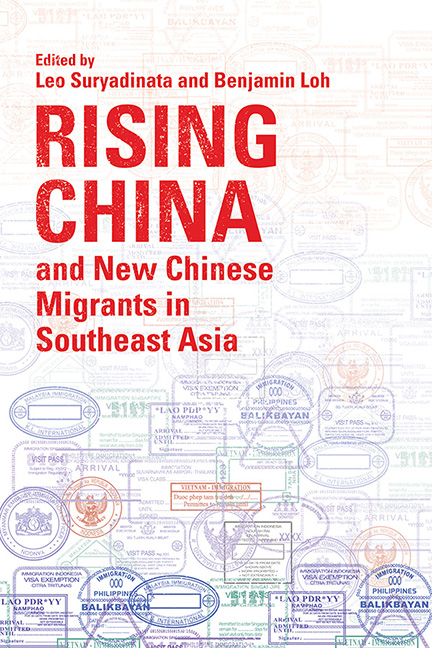Book contents
- Frontmatter
- Contents
- About the Contributors
- Introduction: Rising China and New Chinese Migrants in Southeast Asia
- Part I General Overviews on Rising China and Xin Yimin
- Part II China’s Soft Power, Xin Yimin and Local Communities
- Part III New Chinese Migrants and Local Communities
- Part IV New Chinese Migrants and Local Economies
- Index
13 - Chinese Engagement in Laos: Past, Present and Uncertain Future
Published online by Cambridge University Press: 09 January 2024
- Frontmatter
- Contents
- About the Contributors
- Introduction: Rising China and New Chinese Migrants in Southeast Asia
- Part I General Overviews on Rising China and Xin Yimin
- Part II China’s Soft Power, Xin Yimin and Local Communities
- Part III New Chinese Migrants and Local Communities
- Part IV New Chinese Migrants and Local Economies
- Index
Summary
On 7 April 2010, the Lao government signed an agreement with China that sets out the financing and the construction of a high-speed railway line (420 km) linking the capital Vientiane to southwestern China. The construction was initially set to commence on 25 April 2011 to celebrate the fiftieth anniversary of diplomatic relations between China and Laos. However, the project was postponed after the corruption scandal that led to the removal of China’s Minister of Railways in February 2011. Afterwards, the Chinese construction companies pulled out of the venture fearing the rail link would not generate enough profit. After several years of numerous setbacks and rumours of cancellation, the construction of the controversial China–Laos railway was officially launched on 25 December 2016, but labour issues and compensation for people displaced still linger (Radio Free Asia 2017). The railway is valued at US$6 billion, and is expected to be completed within five years. China holds a 70 per cent stake in the rail project, while Laos holds the remaining 30 per cent.
Should this megaproject materialize, China would be fully connected to Southeast Asia, from Beijing to Singapore. The rail project is part of the Belt and Road Initiative, which aims to develop infrastructure networks across the ancient Silk Road trading routes. It would join the multiples lines of communication that have been built by China over the past few years. The navigation on the Mekong River and the North–South Economic Corridor (NSEC) seemed unrealistic just a decade ago, given the very difficult terrain of this region. These Herculean works are rather emblematic as the Chinese are on track to achieve the mise en valeur of Laos that the French only dreamed of during their colonial rule but failed to implement (Stuart-Fox 1995).
French interest in Indochina was mainly to gain access to the Chinese market to the detriment of the British. That was why building railways and a water road along the Mekong River was crucial to the colonial government. A century later, the same scenario is being replayed, but this time the Chinese have become the dominant players, and they are considering the Greater Mekong Subregion (GMS) as the centrepiece of their “charm offensive” (Kurlantzick 2007, p. 10) in Southeast Asia.
- Type
- Chapter
- Information
- Rising China and New Chinese Migrants in Southeast Asia , pp. 242 - 269Publisher: ISEAS–Yusof Ishak InstitutePrint publication year: 2022



